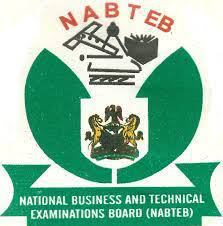JAMB Commerce Syllabus For 2019/2020 Exam
Jamb Commerce Syllabus for 2019/2020 JAMB CBT EXAM, The aim of the Unified Tertiary Matriculation Examination (UTME) syllabus in Commerce is to prepare the candidates for the Board’s examination. It is designed to test their achievement of the course objectives, which are to: (1) acquire the basic concepts of Commerce; (2) examine the relationship between Commerce and other related business subjects; (3) apply the principles of Commerce in Nigeria; (4) appreciate modern, dynamic and positive changes in commercial activities. 1. Commerce (i) Meaning (ii) Functions 2. Occupation (i) Meaning (ii) Types (industrial, commercial and services) 3. Production (i) Meaning (ii) Factors, characteristics and rewards (land, labour, capital and entrepreneur) (iii) Division of Labour (iv) Specialization (v) Types (primary, secondary and tertiary) 4. Trade (i) Meaning (ii) Classification: Candidates should be able to: (i) differentiate between Commerce and other related subjects; (ii) identify the functions of Commerce. Candidates should be able to: (i) compare the different types of occupation. Candidates should be able to: (i) differentiate between production and its factors; (ii) identify the factors of production and their rewards; (iii) distinguish between Division of Labour and specialization; (iv) classify the types of production. Candidates should be able to: (i) identify the classes of trade; (ii) compare the various types of retailers; a. Home Trade (i) Retail trade – types of retailers – functions of retailers – trends in retailing (branding, self service, vending machines, the use of luncheon and fuel vouchers) – advantages and disadvantages of retailers Jamb Commerce Syllabus Jamb Commerce Syllabus Jamb Commerce Syllabus Jamb Commerce Syllabus (ii) Wholesale trade – Types of wholesalers (merchant, agent and general) – Functions of wholesalers – Advantages and disadvantages of wholesalers b. Foreign trade (i) Basic issues in foreign trade (balance of trade visible and invisible, balance of payments and counter trade) (ii) Procedures and documents used in export, import and entrepot trade (iii) Barriers to international trade. 5. Purchase and Sales of Goods ) Procedure and documentation (enquiry, quotation, order, invoice, proforma invoice, statement of accounts, indent, consular invoice, bill of lading, certificate of origin, consignment note, etc) (ii) Terms of trade (trade discount, quantity discount, cash discount, warranties, C.O.D., C.I.F., F.O.B., and E.O.E.) (iii) Terms of payments a. Cash–Legal tender b. Credit – Meaning – Types and functions – Merits and demerits (iii) identify the functions of retailers; (iv) classify modern retailing practices; (v) identify the advantages of retail business and its disadvantages; (vi) classify the types of wholesalers; (vii) determine the functions of wholesalers to manufacturers and retailers; (viii) analyse the merits and demerits of the existence of the middleman; (ix) analyse the basic issues in foreign trade; (x) differentiate between visible and invisible balance of trade; (xi) distinguish the procedures from the documents used in foreign trade; (xii) identify the barriers to international trade. Candidates should be able to: (i) examine the procedures and documents used in the purchase and sale of goods; (ii) determine the terms of trade; (iii) distinguish between cash and credit forms of payment; (iv) identify the types of credit; (v) analyse the merits and demerits of credit transactions. 6. Aids-to-trade a. Advertising (i) Types and media (ii) Advantages and disadvantages b. Banking (i) Types of banks (ii) Services (iii) Challenges c. Communication (i) Process (ii) Types (iii) Trends (iv) Merits and demerits (v) Barriers d. Insurance (i) Types (ii) Principles (iii) Terms (iv) Benefits e. Tourism (i) Terms (ii) Benefits (iii) Challenges f. Transportation (i) Importance (ii) Forms/mode (iii) Advantages and disadvantages (iv) Regulatory agencies g. Warehousing (i) Importance (ii) Types (iii) Functions (iv) Location Candidates should be able to: (i) distinguish between advertising and advertisement; (ii) identify the different types of advertising and its media; (iii) analyse the advantages and disadvantages of advertising; (iv) categorize the different types of banks; (v) assess the roles of western union, moneygram and automated teller machine (ATM) in business transactions; (vi) identify the services rendered by banks; (vii) appraise the various means of payments; (viii) apply acquired banking knowledge in solving challenges facing banks; (ix) specify the different stages in the communication process; (x) analyse the types of communication; (xi) differentiate between the demerits of and barriers to communication; (xii) appraise the contributions of courier services, GSM, etc., to businesses. (xiii) distinguish between the types of insurance; (xiv) apply the principles of insurance to life situations; (xv) appraise the relevance of the National Health Insurance Scheme (NHIS); (xvi) identify the relevant terms in tourism;
Jamb Commerce Syllabus
Categories: Jamb Syllabus | Past Questions
0 Responses




